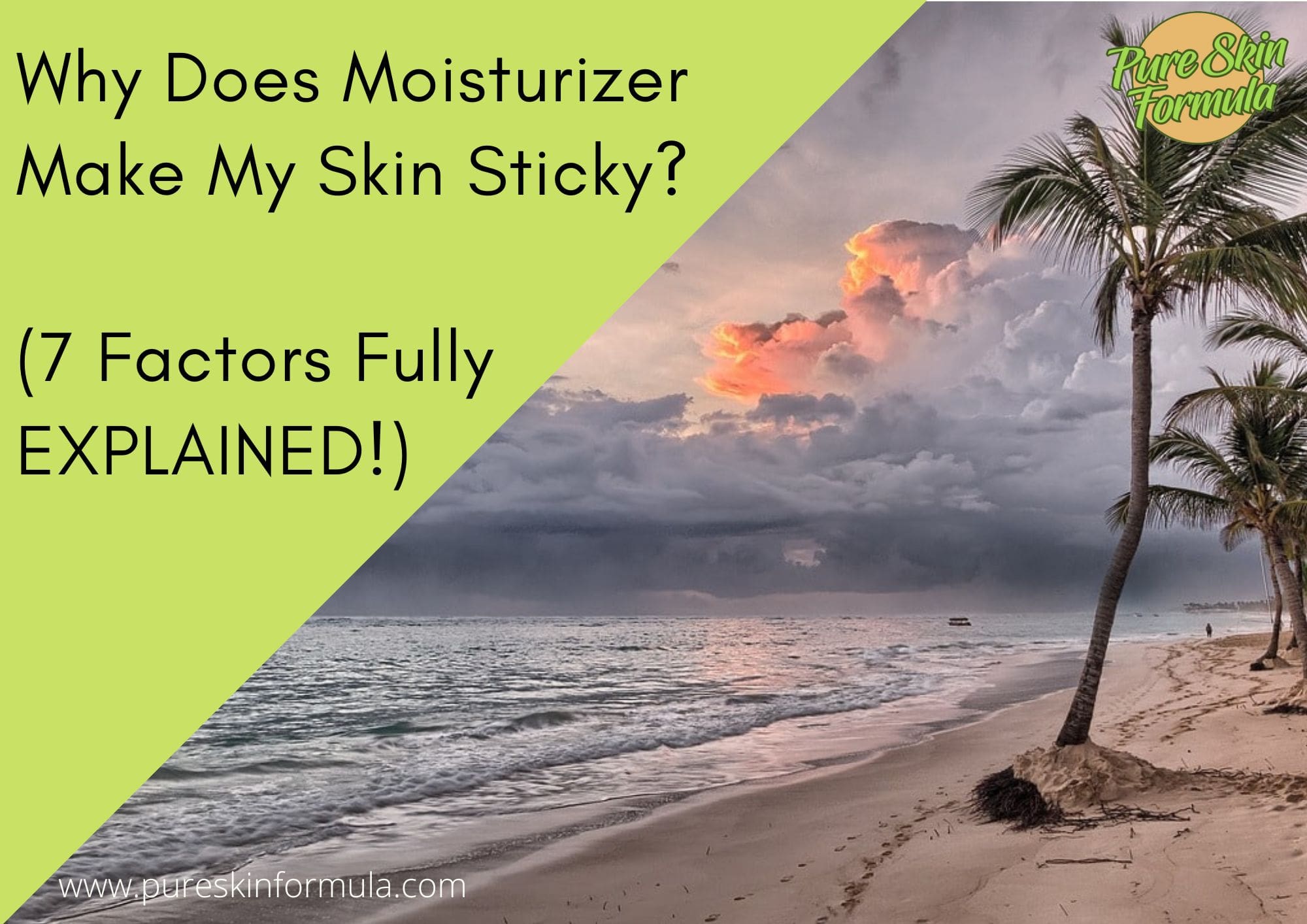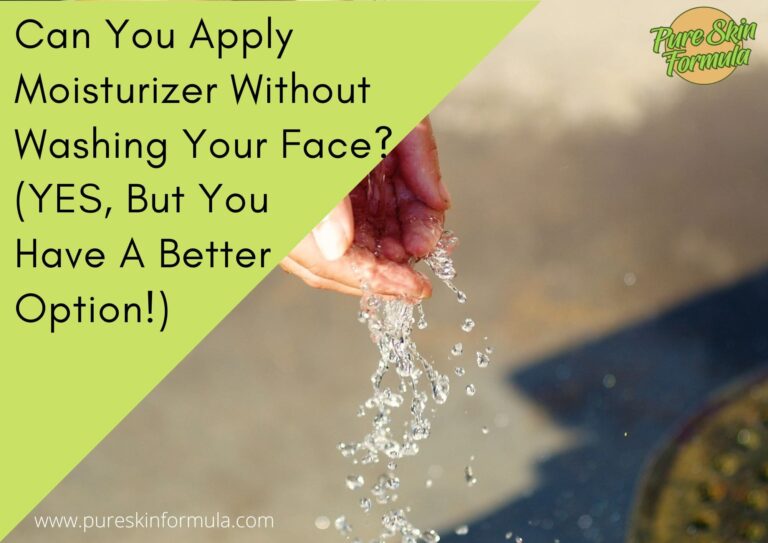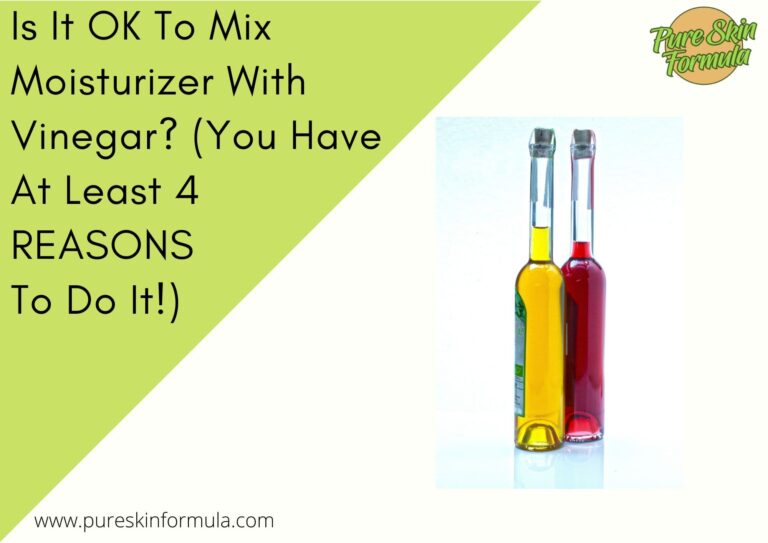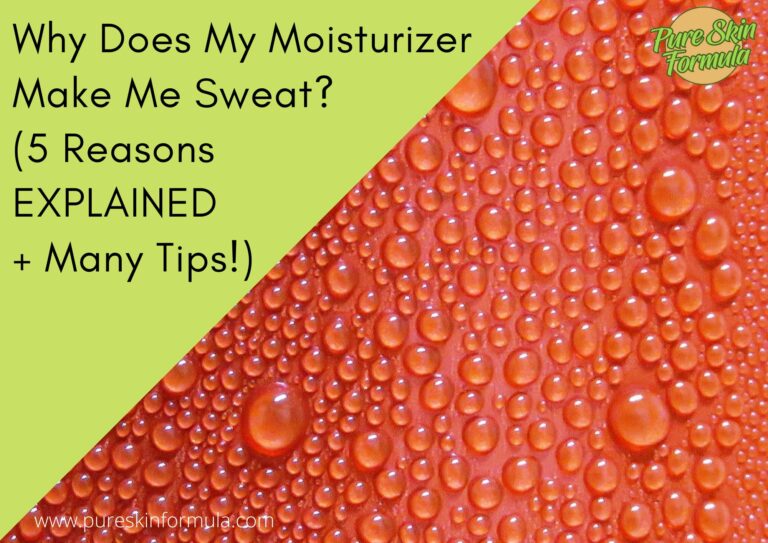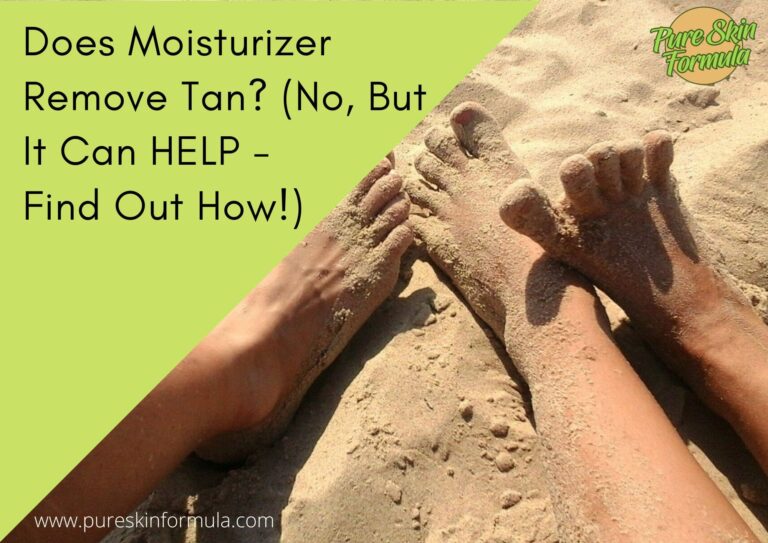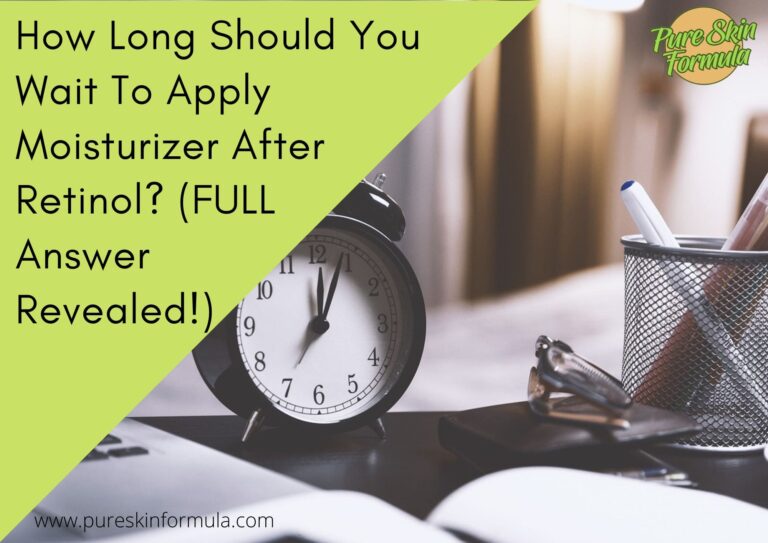A couple of factors can make your skin sticky after applying moisturizer. While some are related to the product used, others lead to the interaction between the ingredients and your skin.
Sometimes the weather conditions matter as well. I have summarized the most essential seven factors for you. Let’s have a look:
Why Does Moisturizer Make My Skin Sticky?
- You apply the moisturizer the wrong way;
- You use the incorrect quantity of the product;
- The climate conditions favor sticky skin;
- The product used doesn’t match your skin type;
- Some ingredients might make your skin feel sticky;
- You don’t give the moisturizer enough time to penetrate the skin;
- You should apply the product on clean skin.
Let’s have a closer look at each factor.
You apply the moisturizer the wrong way
You should follow the correct sequence when having two or more skin care products.
Facial serums are small molecules, so apply them before the moisturizer. They are very concentrated, so a tiny amount is enough.
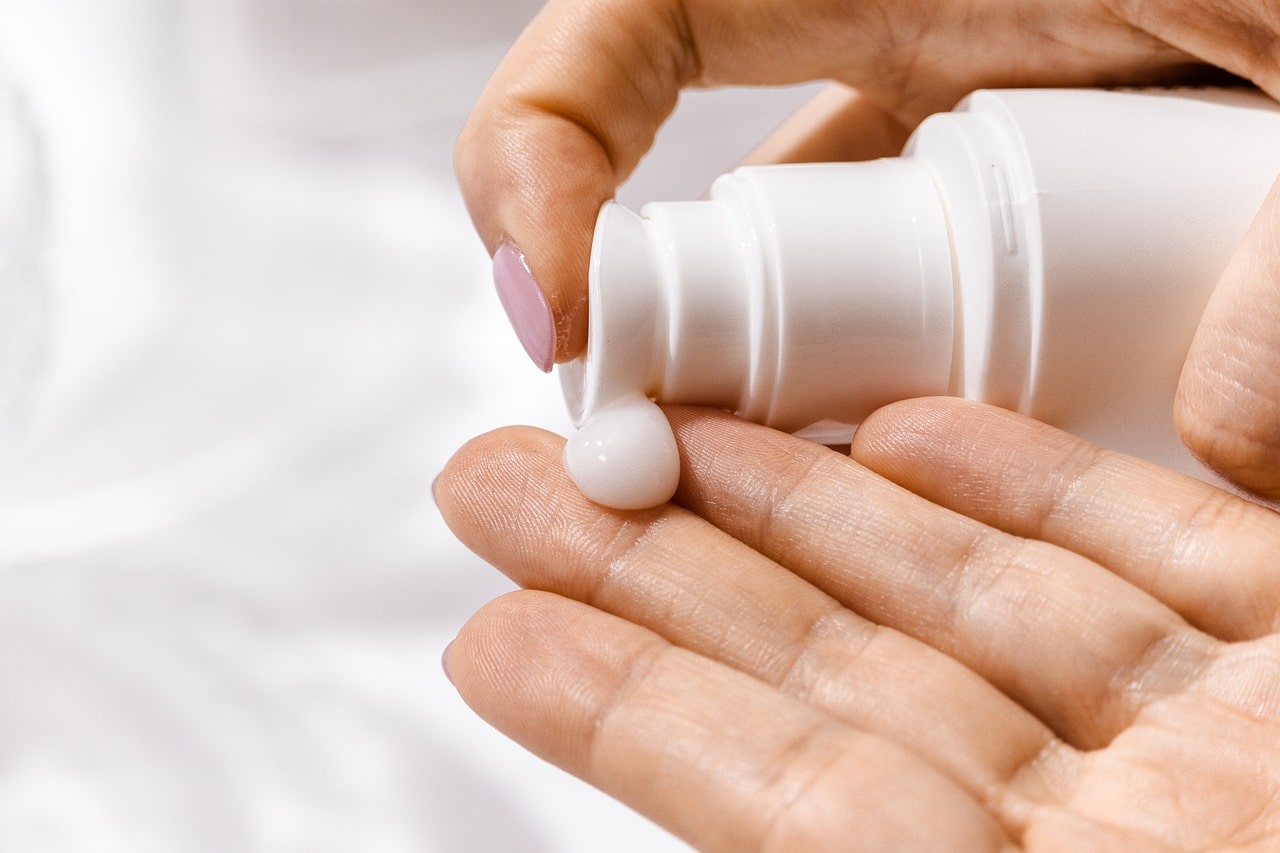
Then apply the moisturizer.
Patting in the cream on the skin is a good technique, giving enough time and heat for sound absorption.
Every morning and evening, do a facial massage (only takes a minute) – the movements should be from the centre to the periphery.
This means starting by applying the cream with the fingers of both hands from the middle of the forehead to the temples, from the nose to the ears, and from the middle of the chin to the cheeks.
You use the incorrect quantity of the product
Another issue is that you use too much moisturizer, thus having a sticky feeling on the skin. Your skin needs as much cream as it can absorb.
If traces of the product remain on its surface, it leaves it without vital oxygen, leading to premature wrinkles.
Certain climate conditions favor sticky skin
Oily skin is a more common problem in humid climates.
Humidity prompts the skin to produce more oil, sweat and other impurities that clog the pores.

That is why you might feel sticky after applying moisturizer.
To keep your skin looking fresh, you can build a skincare routine:
- regular facial cleansing;
- applying a cleanser morning and night that removes makeup, sweat and dirt without drying;
- using a light, oil-free moisturizer;
- If your skin is shiny or oily, apply toner after washing to give it that extra finished glow.
The product used doesn’t match your skin type
You can use a heavy, rich oil-based moisturizer if you have dry skin. Try applying the cream to slightly damp (not wet) skin.
If you have oily skin, the golden rule is to hydrate your face with light, mattifying, water-based day creams for daytime rather than thick-textured ones that would layer more oil on oily skin.
Applying an active anti-oily lotion at night is another possible step. Using an exfoliating product once a week is also recommended.
Some ingredients might make your skin feel sticky
Hyaluronic acid
Hyaluronic acid is one of the most common polysaccharides synthesized by the body.
A major component of connective tissue and its associated proteins forms the basis of intercellular substances.
Due to its helical structure, it acts as a “molecular” sponge and attracts 1000 times more water than its weight.
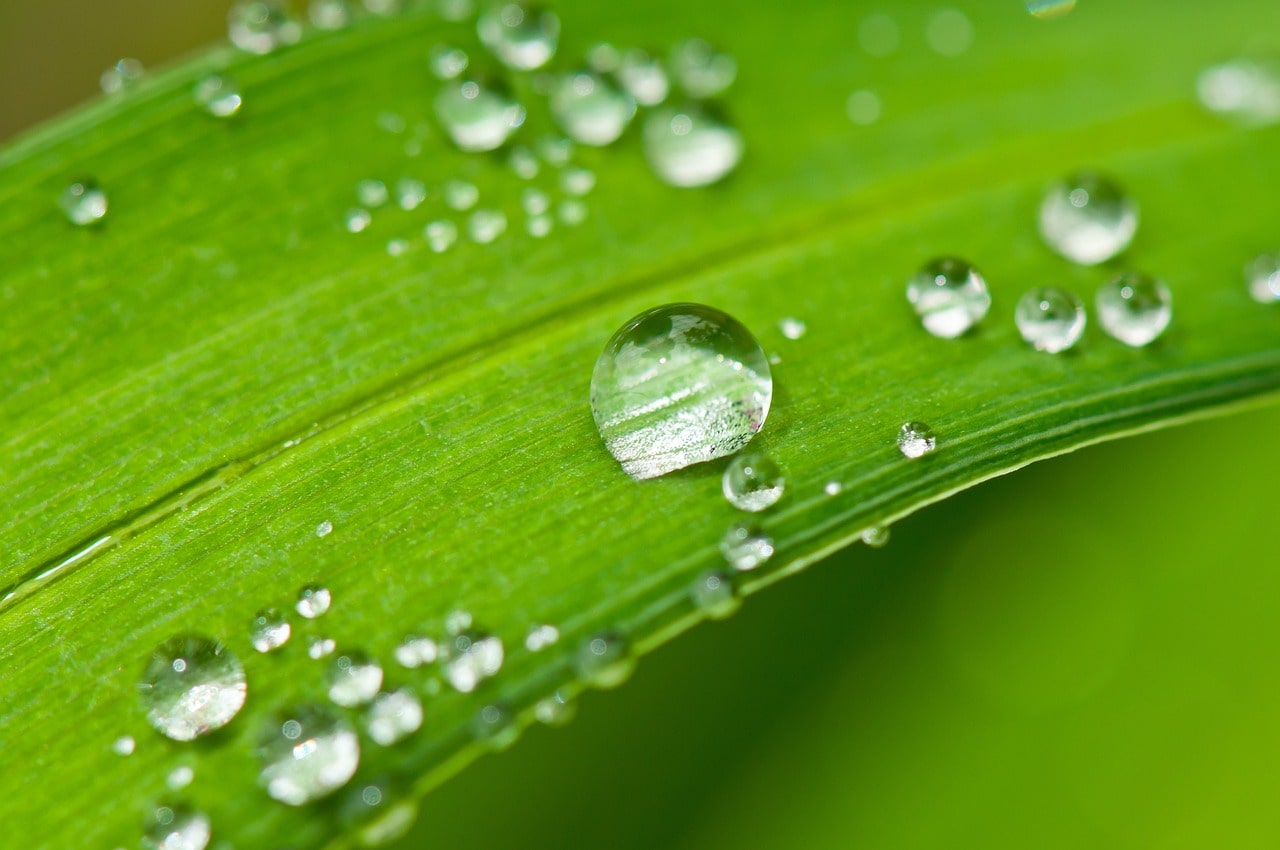
This way, it maintains the skin’s optimal hydro balance, increases its elasticity, and slows aging.
Products containing hyaluronic acid have a delicate consistency and are quickly absorbed by the skin without making it greasy.
Their regular use increases the moisture content of the upper cell layers, restores its normal hydro-balance and strengthens its resistance forces.
When used directly on the skin, through a specific beauty product such as a cream or gel, hyaluronic acid hydrates the skin as a moisturizer.
It draws moisture from the air into the skin and helps hydrate the entire skin through circulation.
Many products on the market have hyaluronic acid in their composition.
Suppose the product formula is not good quality and has more than needed hyaluronic acid. In that case, this can either overdose your skin with moisture, break out, or become very sticky after application.
Aloe Vera
Aloe vera is an ingredient that effectively fights dry skin and impurities and is found in many beauty products, including moisurizers.
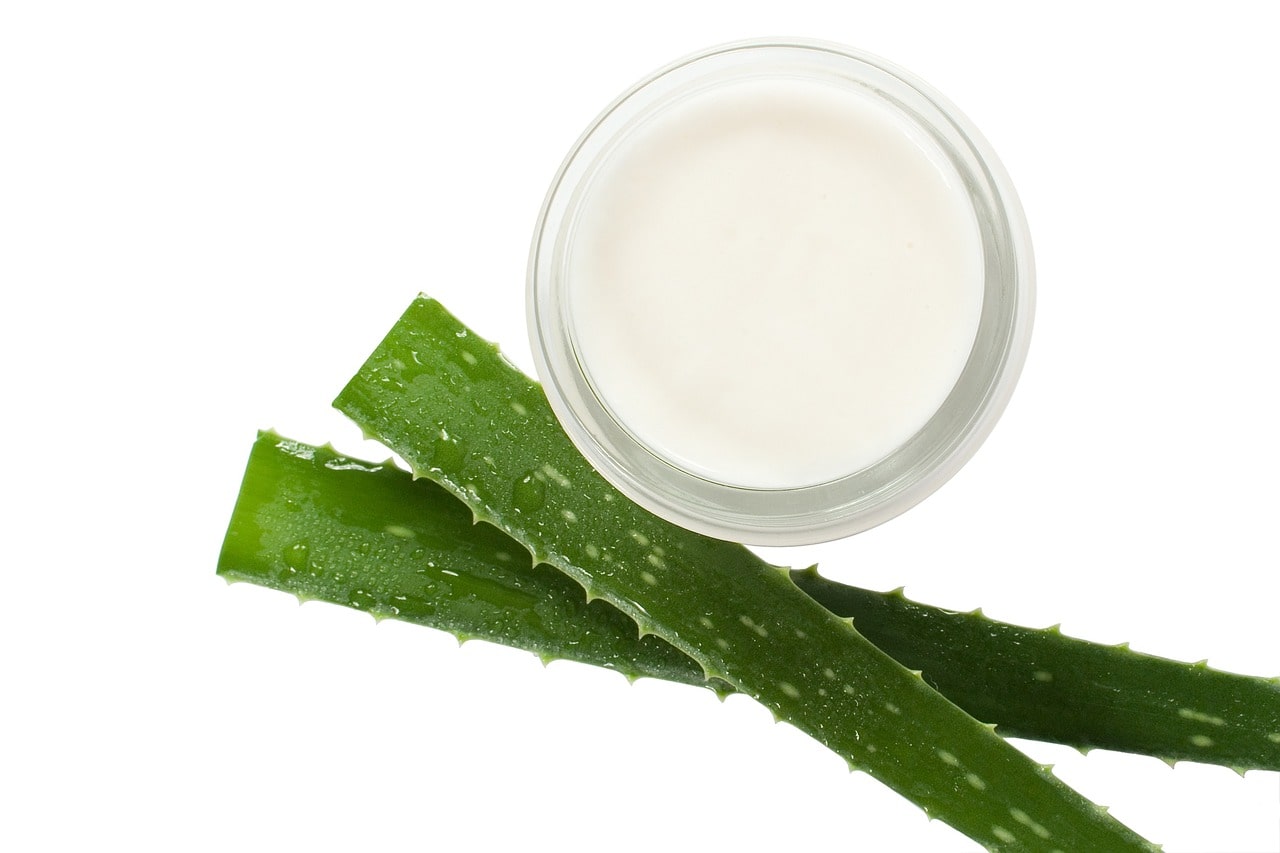
The gel is extracted from the aloe vera plant. Aloe vera has a cooling effect on sunburn, helps the skin to regenerate, soothes and has an anti-irritant and antiseptic effect.
It is also a fantastic source of moisture. It consists of 200 active ingredients, including numerous vitamins, enzymes, minerals, amino acids, essential oils and salicylic acid.
If you use an aloe vera-based moisturizer, you can feel sticky.
You don’t give the moisturizer enough time to penetrate the skin
Skincare products require a few minutes to get absorbed into the skin.
If you don’t give that time or don’t follow the correct product sequence, you can experience a sticky feeling on the skin.
What is the difference between penetrating and absorbing the substance into the skin?
Skin penetration represents the substance between the top layer of skin, the stratum corneum, and the bottom layer (stratum basale).
At the time of penetration, our body has not yet absorbed the substance, which does not affect the body in any way.
Absorption occurs when the ingredient crosses the skin barrier and reaches the bloodstream.
You should apply the product on clean skin
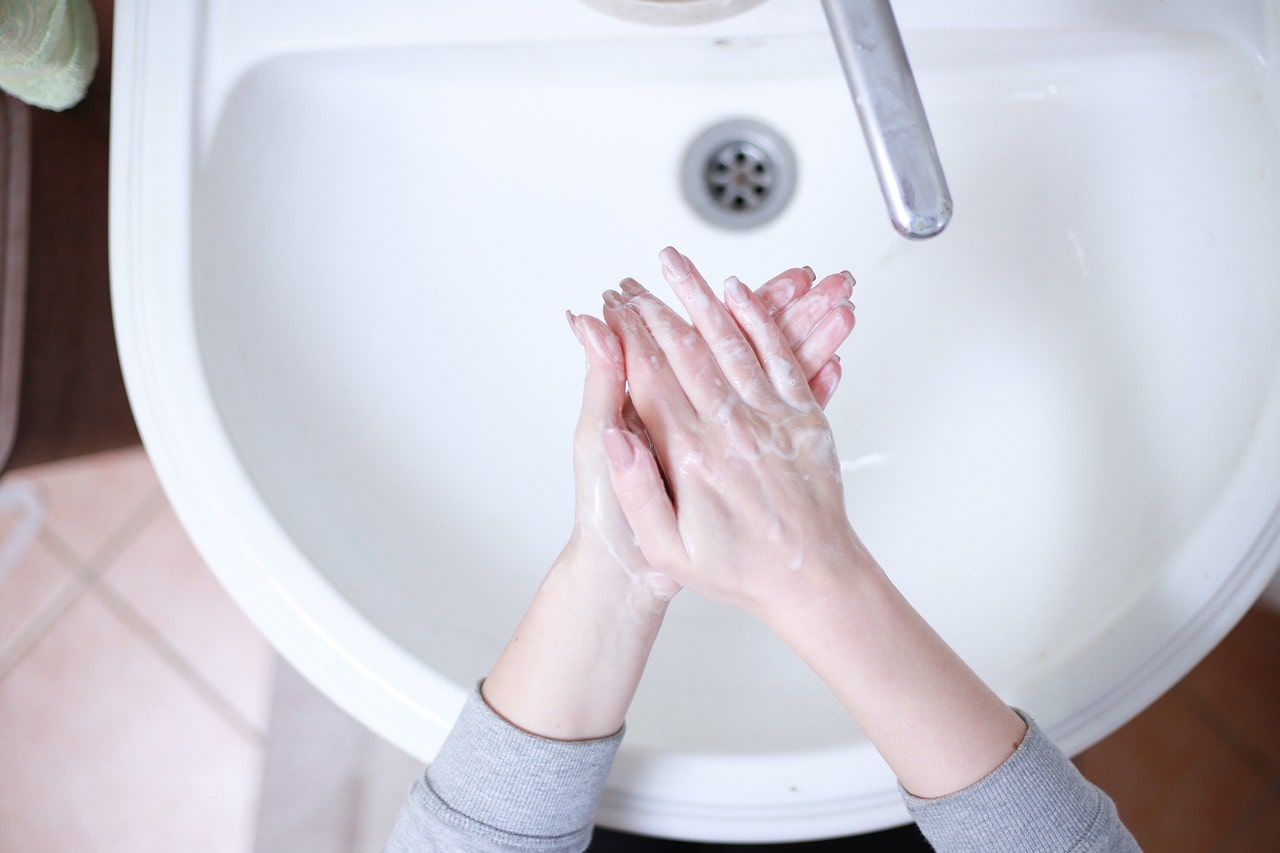
An important rule in cosmetics is constantly applying facial products on wholly cleansed skin. Then use the product with the smallest molecule to ensure its complete absorption by the skin.
Clean your skin thoroughly and make sure there is no trace of makeup on it. If you use an exfoliant, apply it afterwards.
Put some toner on a facial cleansing pad and cleanse your face once more to ensure you have removed the minerals and chlorine from the water you have soaped your face.
The bottom line
Are you feeling greasy and sticky when applying moisturizer? No worries. I have extracted the seven most probable reasons why this might happen and how to avoid that unpleasant feeling.
Thank you for reading!
Valeria

